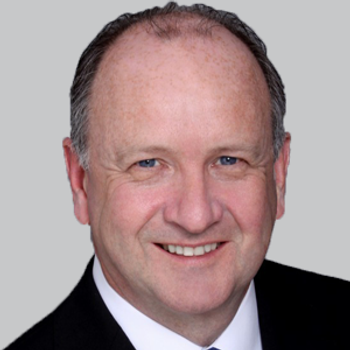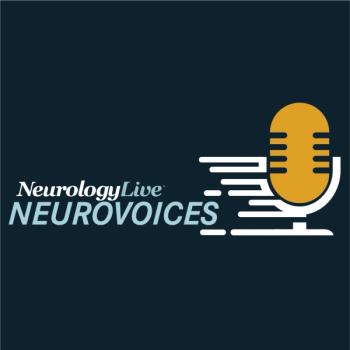
The CLARiTI study spans across all 37 Alzheimer Disease Research Centers, collecting evidence on imaging and blood-based biomarkers to generate etiologic patient profiles of mixed dementia.

Marco Meglio, Assistant Managing Editor for NeurologyLive, has been with the team since October 2019. Follow him on Twitter @marcomeglio1 or email him at [email protected]

The CLARiTI study spans across all 37 Alzheimer Disease Research Centers, collecting evidence on imaging and blood-based biomarkers to generate etiologic patient profiles of mixed dementia.

Mind Moments®, a podcast from NeurologyLive®, brings you an interview with Daniel Ontaneda, MD, PhD. [LISTEN TIME: 32 minutes]

TOPAMAD will include 70 children with epileptic spasms who experienced hormonal therapy failure to determine whether modified Atkins diet or topiramate is a more effective treatment approach.

Over a 6-week period, patients taking IGC-AD1, on average, experienced a more significant reduction in agitation scores compared with those on placebo, with effects seen as early as week 2.

The phase 2 study for risvodetinib in Parkinson disease aims to halt disease progression and reverse functional loss.

The chief executive officer at Elixirgen Therapeutics provided commentary on the promise of the Bobcat mRNA, and the mechanism of action for mRNA-like therapies to treat Duchenne muscular dystrophy.

Despite the overall cohort not reaching statistical significance on the primary end point, a subgroup of patients on SLS-005 without AMX0035 performed better.

With the added coverage, it paves the way for individuals facing the hurdles of migraine disease to obtain an easy-to-use nonpharmacological option for both acute and preventive migraine care.

A panel of experts MS specialists provided commentary on the clinical development of these therapies, some of the specific agents within the pipeline, and how to navigate potential safety concerns.

A 24-hour subcutaneous infusion of ND0612 was superior to oral immediate-release levodopa–carbidopa at increasing on time without troublesome dyskinesia and reducing off time in adults with Parkinson disease.

Test your neurology knowledge with NeurologyLive®'s weekly quiz series, featuring questions on a variety of clinical and historical neurology topics. This week's topic is Purple Day and epilepsy awareness.

Shae Datta, MD, a neurologist and headache specialist at NYU Langone Health, discussed the effects of traumatic brain injury and the need to accurately diagnose patients in a timely manner.

Over an 18-month period, patients demonstrated significant increases in ON time with bemdaneprocel, even after stopping immunosuppressives 1 year into treatment.

The phase 2 multisite trial is expected. to include 498 patients to assess the efficacy, safety, and tolerability of Lu AG09222 as a potential migraine preventive.

Tim Siegert, PhD, chief operating officer and co-founder of Allyx Therapeutics, provided commentary on the recently announced positive phase 1b results for ALX-001, an agent in development for Alzheimer and Parkinson disease.

Over 61.1 patient-years of treatment experience, AOC 1001 was well tolerated in patients with DM1, with nausea and headache the most commonly reported adverse events.

Building on positive phase 1a data, ALX-001 demonstrated target engagement of mGluR5 receptor and maintained a safe profile across multiple doses.

Monepantel, a novel, potent, inhibitor of the mTOR pathway, was safe in patients with ALS, resulting in stabilized ALS Functional Rating Scale scores.

The delivery device is prefilled with the prescribed dose of Acthar Gel in 40- or 80-unit versions, and may help administration of the appropriate subcutaneous dose of Acthar Gel.

Comprised of more than 400 patients with SMA, results showed that wanting to be treated with all possible DMTs was the most common reason for combination therapy.

Amanda Peltier, MD, a professor of neurology at Vanderbilt University Medical Center, spoke on current care needs for adults with neuromuscular disorders and the realistic ways to enhance clinical care going forward.

GA Depot, composed of extended-release microspheres administered intramuscularly, typically every 28 days, was expected to result in fewer injection site reactions than other glatiramer acetate products.

Test your neurology knowledge with NeurologyLive®'s weekly quiz series, featuring questions on a variety of clinical and historical neurology topics. This week's topic is Purple Day and epilepsy awareness.

These finding suggest that even immune cells in the brain can play a significant role in the progression of neurodegenerative diseases like FA.

Over the coming weeks, Amylyx will undergo heavy discussions with regulators and community members to decide the next best steps for AMX0035 after the agent failed to meet its primary end point in its latest study.

The FDA will discuss TRAILBLAZER-ALZ 2, a large-scale phase 3 study that assessed the effects of donanemab in 1736 patients with early-stage Alzheimer disease over a 76-week period.

Mind Moments®, a podcast from NeurologyLive®, brings you an interview with Alcibiades Rodriguez, MD. [LISTEN TIME: 19 minutes]

The real-world, 3-year study is expected to include 30 males with SMA on risdiplam, an SMN2 splicing modifier, to assess fertility-related outcomes.

The cofounders and cochief executive officers at Amylyx Pharmaceuticals provided commentary on the incorporation of AMX0035 for patients with ALS and the upcoming PHOENIX confirmatory trial.

Median time to loss of ambulation for golodirsen-treated patients was 1968 days vs 1092 days for external control patients.